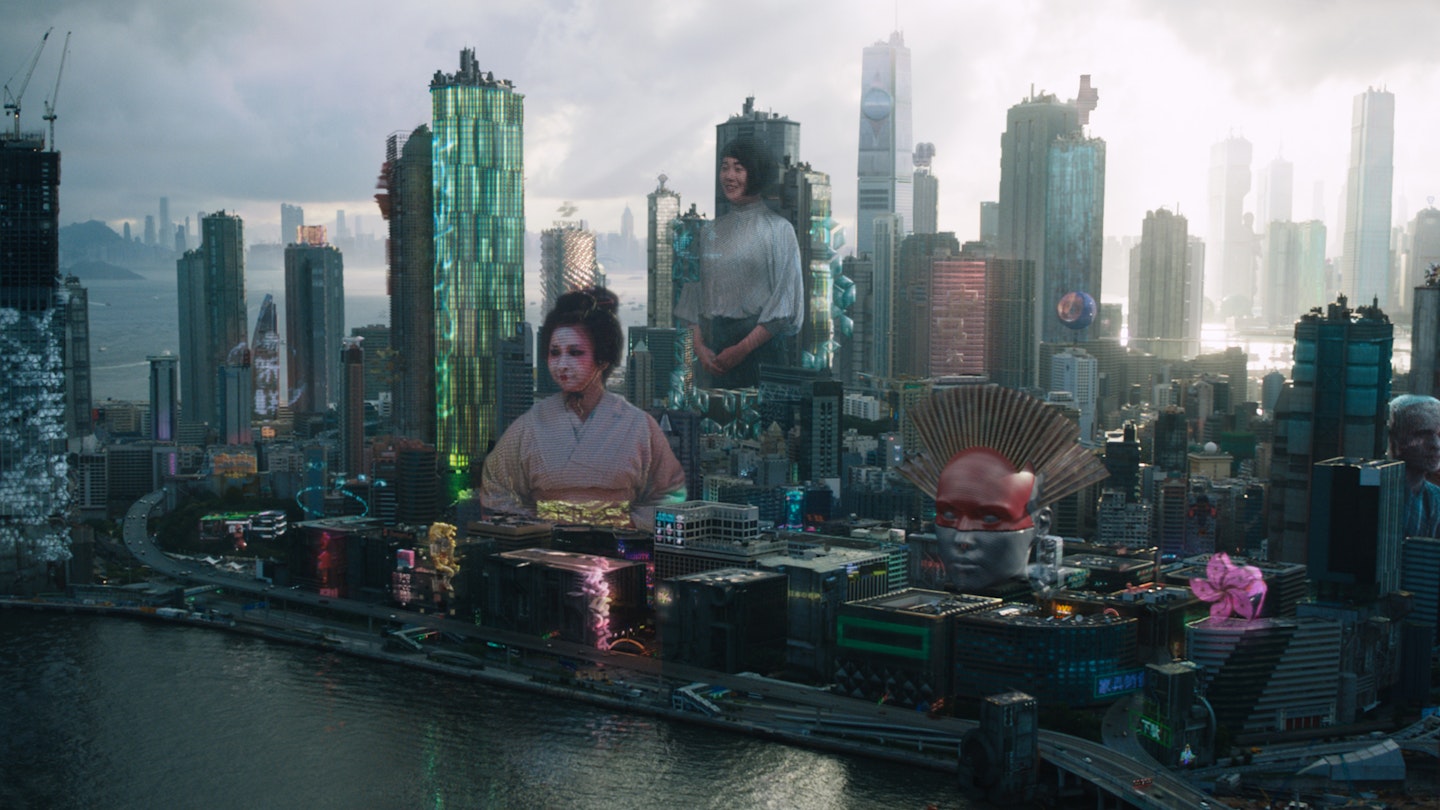If adapting one of the world’s most-loved animes wasn’t a big enough task, the team behind Rupert Sanders’ Ghost In The Shell had to create a whole new world for their live action outing. The director tasked London-based visual effects house MPC (who have worked on Life Of Pi, Harry Potter and Man Of Steel to name but three) with bringing his vision to life, resulting in their completing over 1000 shots for the film. We spoke to MPC’s Production VFX Supervisor Guillaume Rocheron to find out more about the new shooting techniques and software tools that were used in the manga reimagining.
'Sologram' is the new 'hologram'

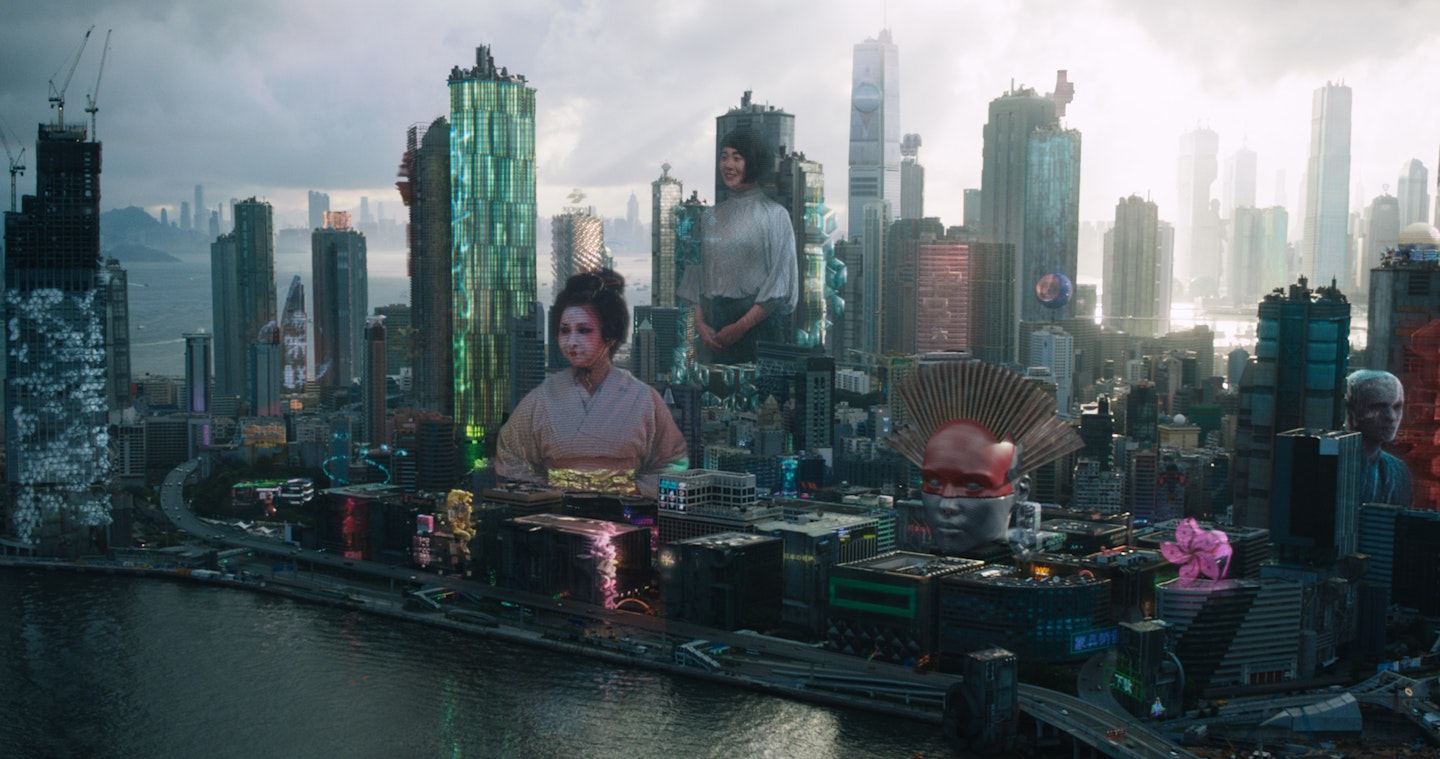
The larger-than-life holograms that dominate the film’s skyline are dubbed “solograms”, according to Rocheron. “One of the biggest tasks for MPC was to create the movie’s iconic futuristic world. To achieve the vision of the movie, director Rupert Sanders tasked the team with building a city filled with gigantic holographic advertisements. MPC made a mixture of 372 solograms and holograms to populate the city shots.”
Forget 4K – it's all about 2K


As well as the gargantuan solograms, the film features giant faces and other floating body parts. “To create these photoreal volumetric displays, the movie’s motion photogrammetry camera system provider, Digital Air, designed a new custom-made rig of 80 2K cameras, running at 24fps, to capture volumetric footage of actors.” We can imagine James Cameron was on the phone day of release...
Adding layers

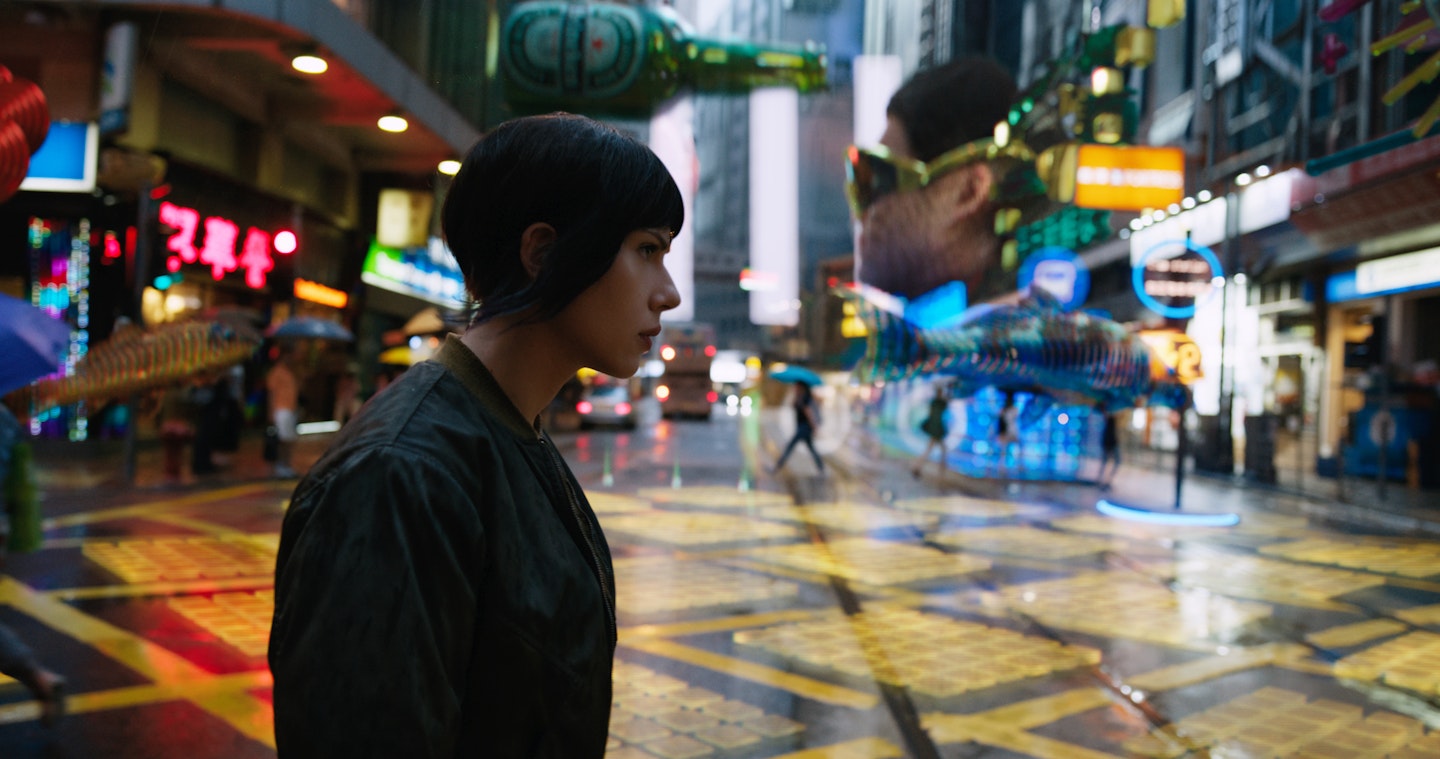
At points in Ghost In The Shell it’s hard to work out – besides the obvious – where the real world ends and the CG begins. “MPC’s software team built new tools, which allowed them to reconstruct, process, manipulate and layout the volumetric scan date into the shots to build the solograms.”
Ghost Cams at the ready
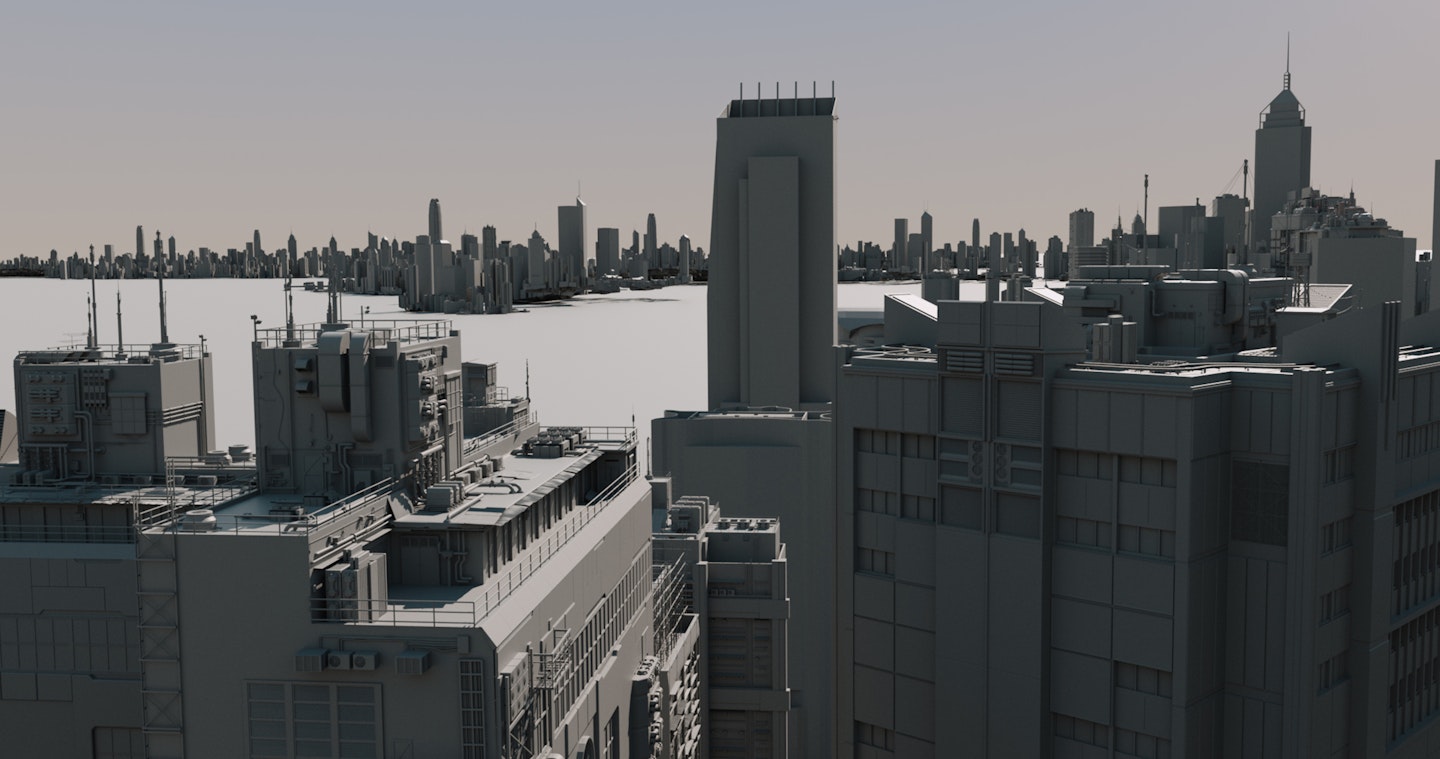
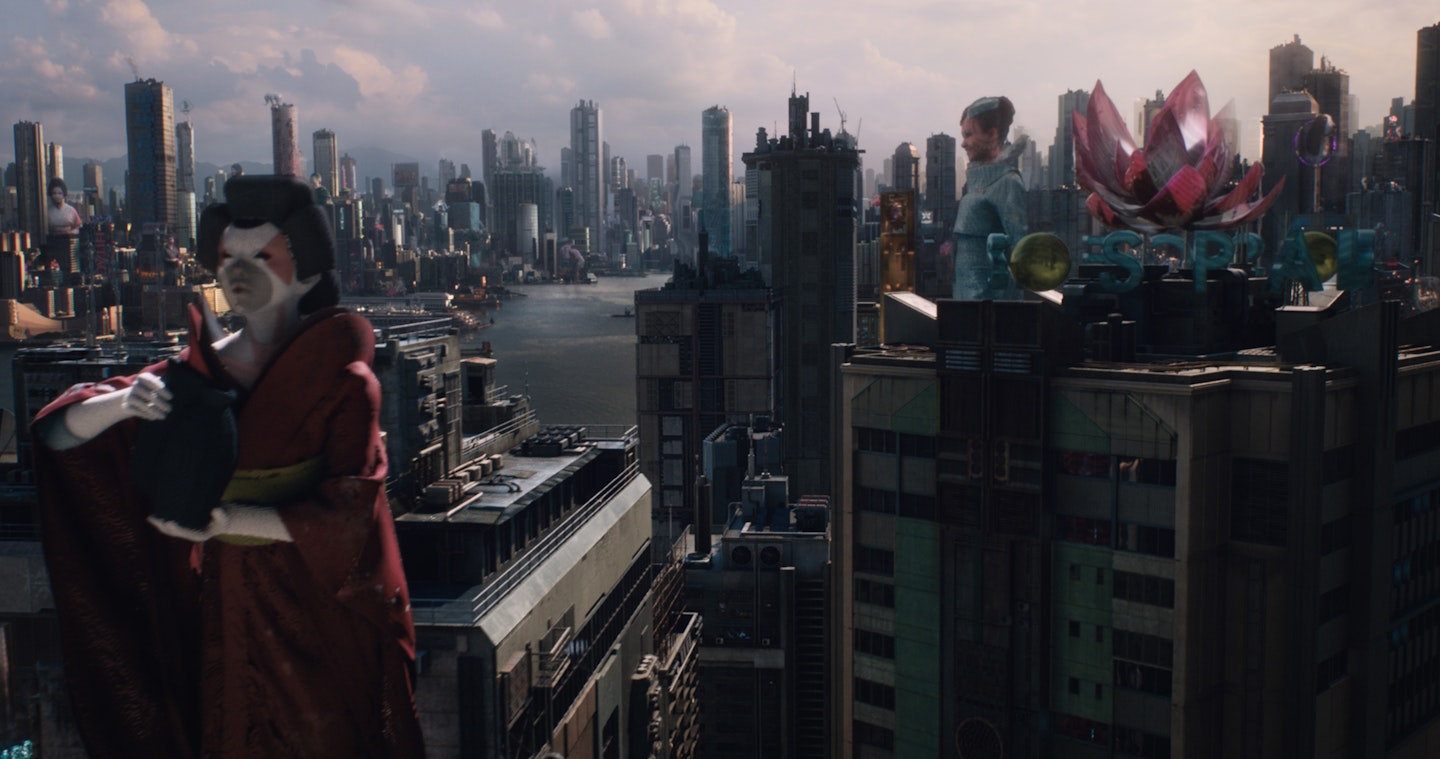
The sheer size of Ghost’s solograms are captured perfectly by “full CG flyovers, named ‘Ghost Cams’”, Rocheron explains. “Not only were these shots complex from an artistic and technical standpoint, but they were also crucial to the storytelling, allowing Sanders to present the audience with an understanding of the future Ghost In The shell is based."
All is not quite as it seems

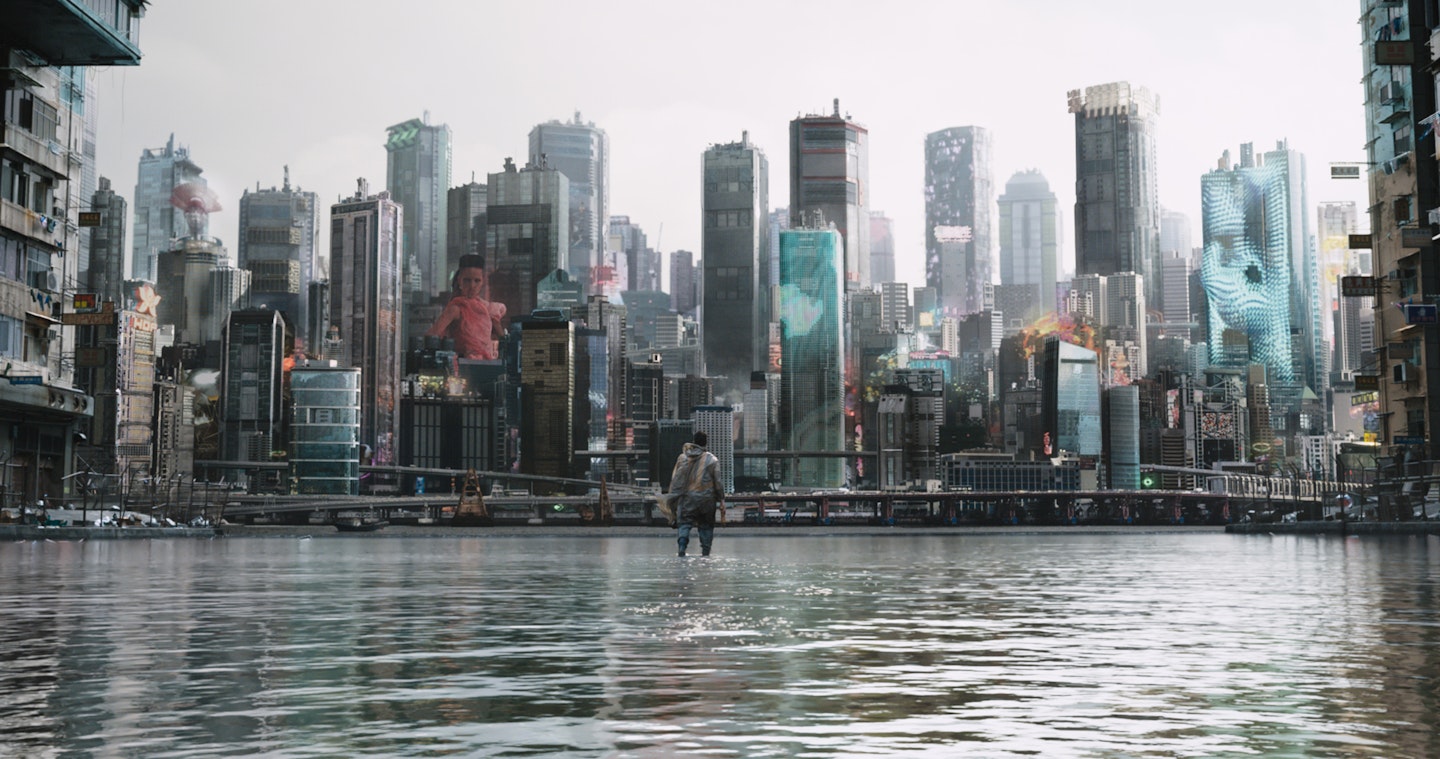
One of the film’s most impressive set pieces takes place in water, before a set of towering city blocks and solograms. But before we get onto the action itself, let's take a moment to appreciate how much of that particular scene's setting wasn’t, well, ‘there’. “To create shots of the CG city, the VFX team created a library of futuristic buildings and vehicles, elevated highway systems and crowd and traffic simulations, before populating with solograms and holograms."
Thermoptic dynamics – Major's suit
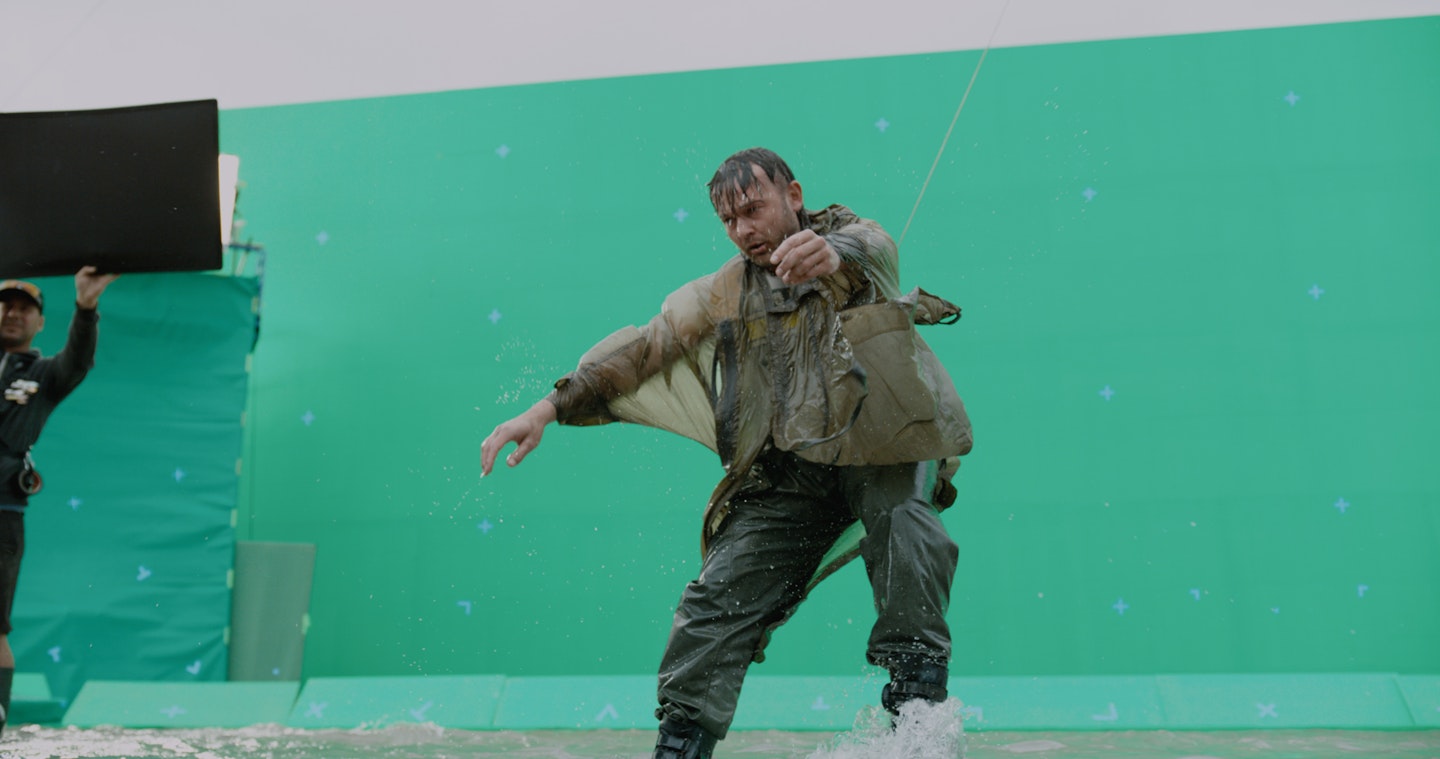

So, about that fight. Johansson battles the pictured character, Skinny Man (Daniel Henshall), in seemingly see-through form. MPC created a “CG Thermoptic Suit” for Major. “For the courtyard fight scene, the complexities were in blending the 360 degree full CG environment, built to recreate the look of the original manga movie, water effects and the Thermoptic suit’s invisibility effect.”
Getting the character design right

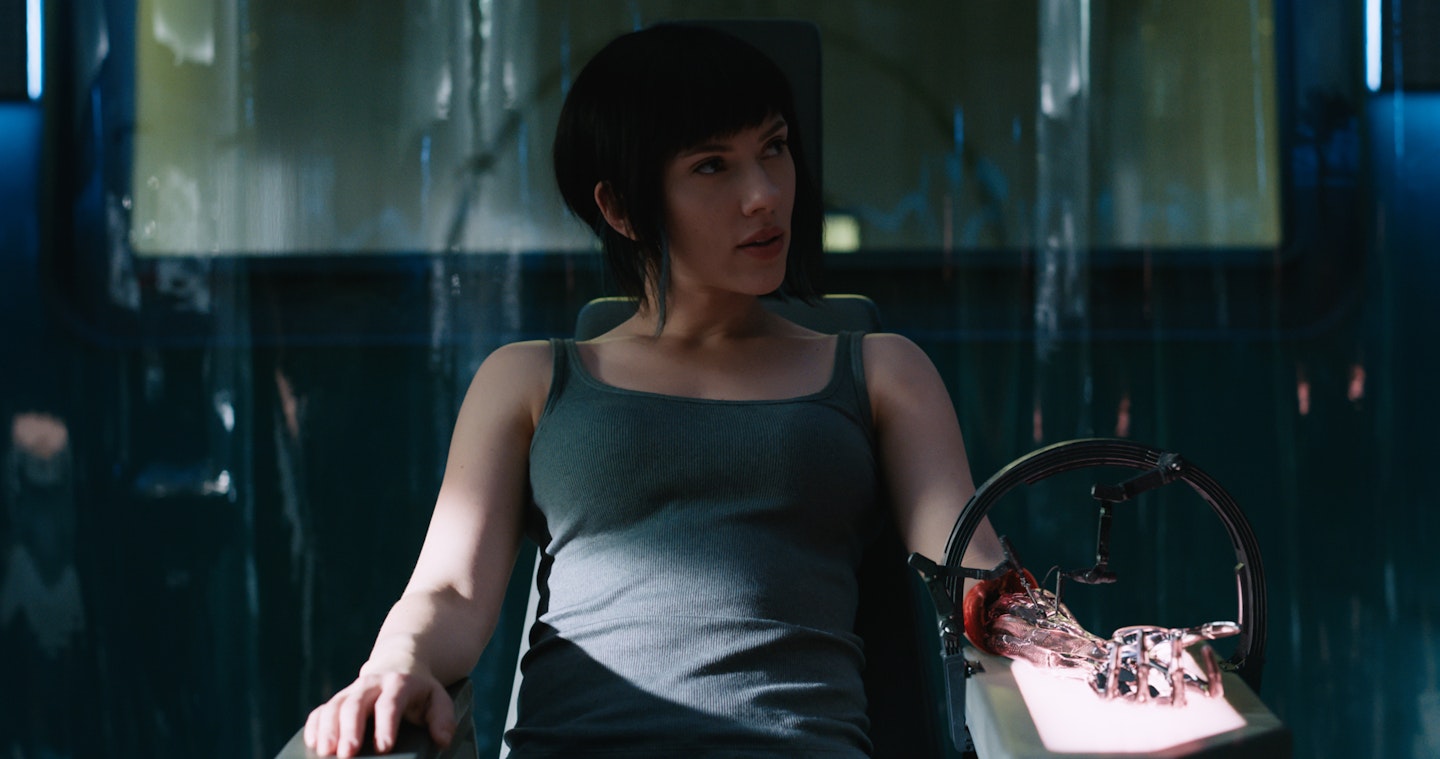
“Cyber-enhancement is an integral part of the world of Ghost In The Shell, says Rocheron as you can tell from Major's Terminator-esque lower arm. “The character design required a seamless mix of the actors’ real body parts with digital parts for characters including Major and Kuze (Michael Pitt)."
Through the (fake) looking glass
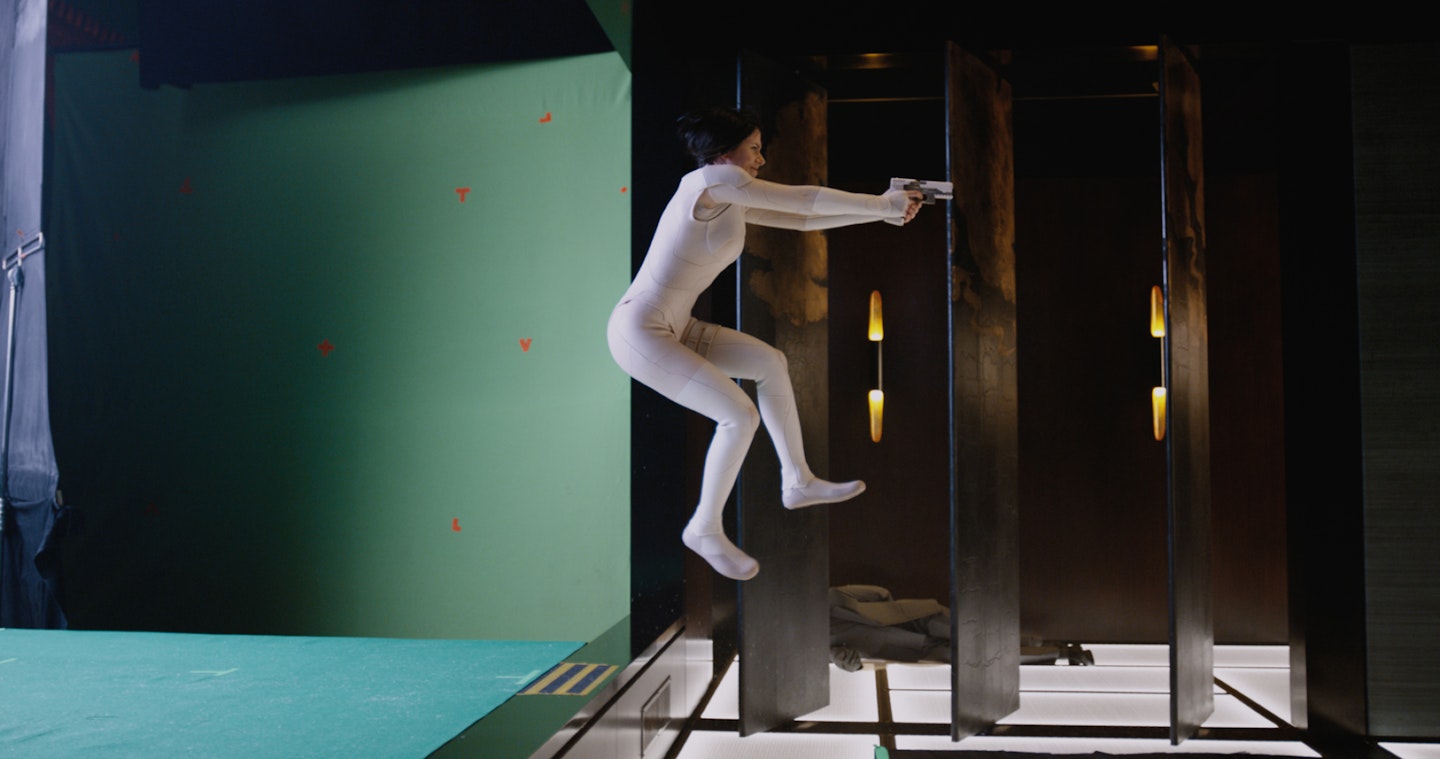
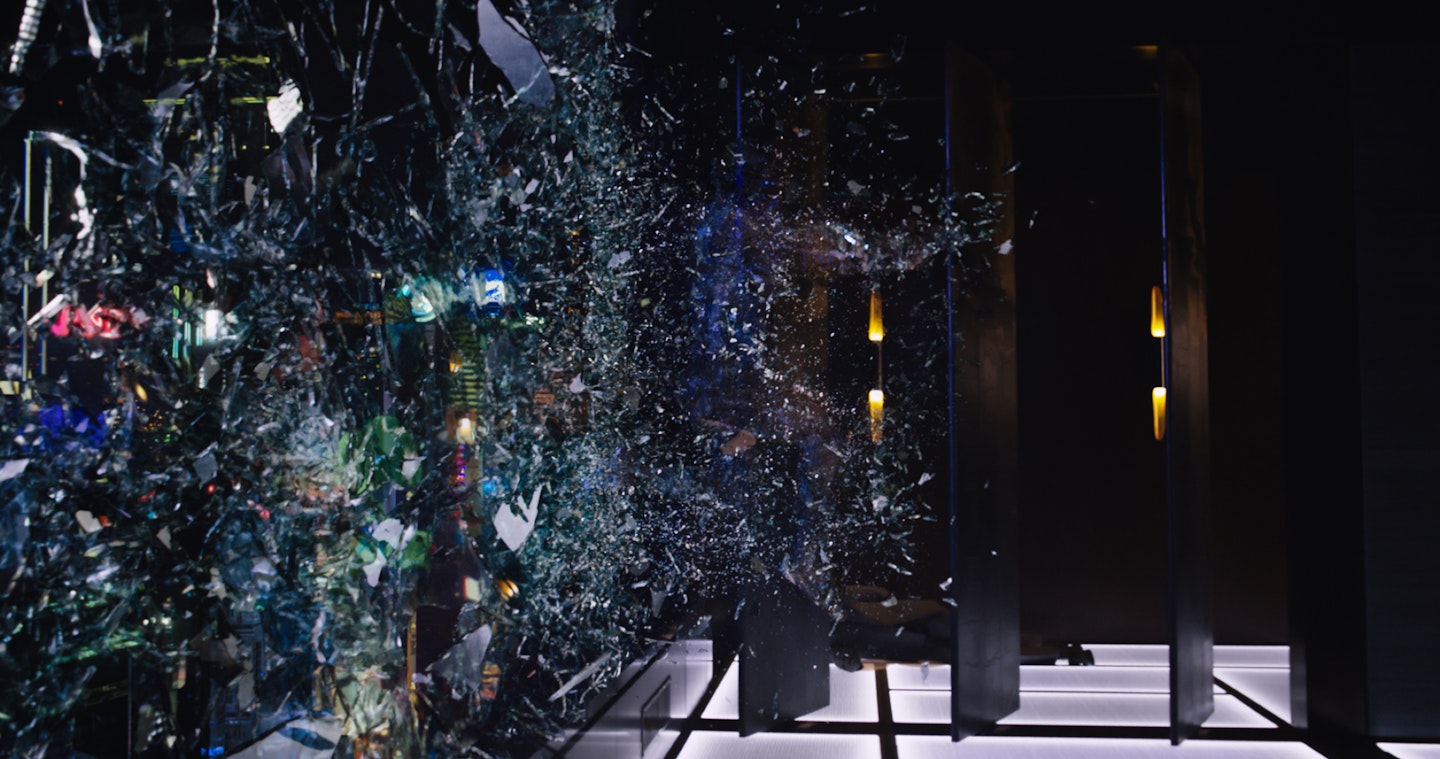
The film’s (arguably) most iconic moment sees Major crash through a glass screen, sending fragments every which way. But as you can see, Johansson was purely on a set a strings. “MPC’s FX team created CG glass and then shattered it using Houdini’s Rigid Bodies with custom tools. Each piece was activated using a growing sphere Activator, anything inside the sphere would activate and shoot forward. A post simulation deformation effect was used for the wobble.”
Geisha spidey

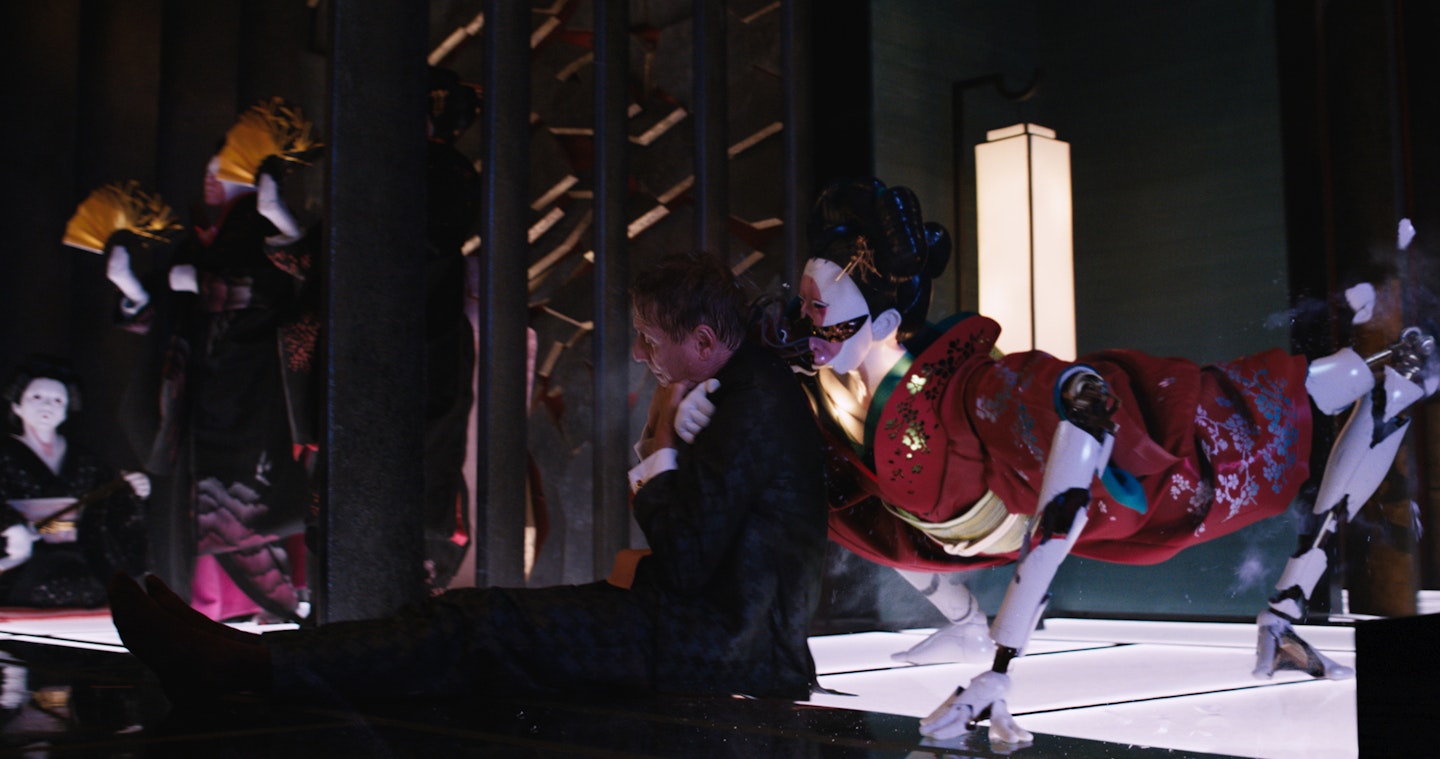
Ghost In The Shell's geisha masks are made from a 3D mould of actress Rila Fukushima’s face. But the film's creepy spidey geisha bot definitely required more FX. “The geisha scene was particularly successful as it blends practical, partial CG and full CG elements. Sometimes only the practical hand, or a practical piece of cloth or section of the face was kept, replacing everything else with MPC’s CG version.”
Images are courtesy of MPC. © 2017 Paramount Pictures and Dreamworks Pictures.
